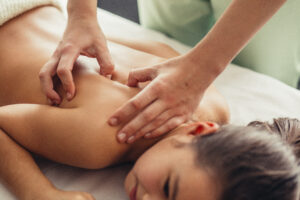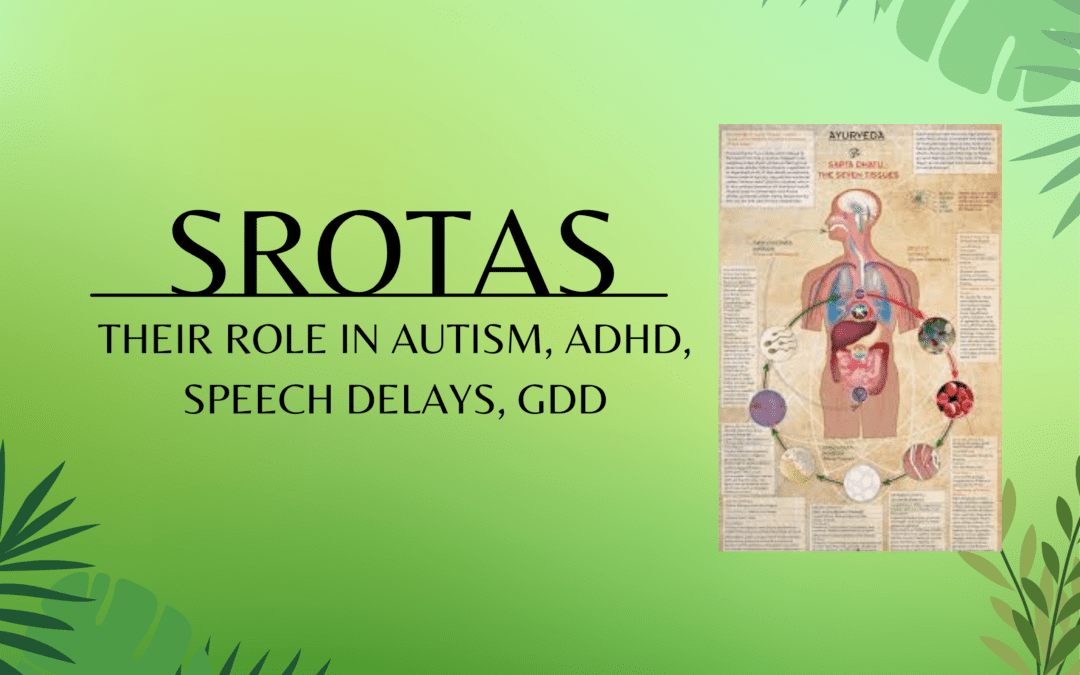Benefits of Abhyanga for Children: Preventing Autism, ADHD, and Developmental Issues
Being a parent is a roller coaster ride that brings forth a multitude of emotions that can’t even be expressed in words. It involves juggling between what to do and what not to do to ensure the well-being of your child. The challenge becomes even greater when you discover that your child is at risk of developmental issues such as Autism or ADHD. These issues present challenges that can impact your child’s sensory, emotional, and cognitive development. However, there’s promising news – the traditional Ayurvedic practice of “Abhyanga” has the potential to positively contribute to children’s well-being, preventing ADHD and Autism. If you’re a concerned parent seeking the best for your child’s overall well-being, read this blog to discover the benefits of Abhyanga in kids from birth to age 3.
What is Abhyanga?
Abhyanga is a vital component of panchakarma and involves the gentle application of warm, hand-picked herbal-infused oils on a child’s body. This ancient practice has been employed by Ayurveda practitioners for ages to promote emotional balance, physical health, and sensory integration in both children and adults. This Ayurvedic detoxification and rejuvenation therapy has shown promising benefits in aiding the development of children with Autism Spectrum Disorder (ASD) and Attention-Deficit/Hyperactivity Disorder (ADHD).
Children with ASD often struggle with social interactions, communication challenges, repetitive behaviours, and sensory sensitivities. Meanwhile, ADHD is characterized by difficulties in sustaining attention, controlling impulsive behaviour, and hyperactivity. When Abhyanga and Panchakarma therapies are customized to the unique needs of these children, they offer a holistic approach to address sensory sensitivities, anxiety, and behavioural challenges. The calming and grounding effects of Abhyanga contribute to improved focus, reduced anxiety, and enhanced sensory integration.
Benefits of Abhyanga for Children:
1. Calmness and Emotional Balance
The therapeutic nature of this Ayurvedic technique has a calming effect on a child’s nervous system. Regular practice can help reduce mood swings, anxiety, and irritability – common challenges faced by children with Autism.
2. Holistic Nourishment
Abhyanga promotes proper development and growth by providing essential nutrients through the skin. The warm oils penetrate deeply, nourishing tissues, bones, and muscles, thereby supporting overall physical growth.
3. Sensory Stimulation and Integration
The rhythmic strokes and gentle touch of a mother can significantly impact your child’s sensory development. It helps create a positive sensory experience, enabling coordination and integration of sensory input – a crucial aspect in managing conditions like ADHD and ASD. In addition, the motherly touch aids in the child’s growth.
4. Improved Sleep Patterns
Developmental issues often lead to sleep disturbances. This is where Abhyanga can be beneficial. Its soothing effects promote relaxation, leading to regular sleep patterns and better sleep quality.
Why is Abhyanga Significant for Children Since Birth?
Child Specialist Dr. Santhisree Bheesetti suggests that the early years of a child’s life are critical for laying the foundation of their physical, emotional, and cognitive well-being. Abhyanga helps in establishing the right foundation. When incorporated from birth, it can yield profound benefits, including:
1. Neurological Development
Early sensory experiences play a pivotal role in shaping a child’s neurological pathways. Abhyanga aids in establishing healthy sensory connections, potentially reducing the risk of developmental issues.
2. Bonding and Connection
The loving touch of an Ayurveda expert, along with the coordination of a parent during Abhyanga, fosters a strong bond between the caregiver and the child. This connection positively impacts the child’s emotional development and sense of security.
The reasons why Abhyanga is crucial for kids extend beyond neurological development and a strong parent-child bond.
This therapeutic approach becomes particularly relevant due to its profound connection with the skin, our largest sensory organ. The skin, as a sensory organ, is uniquely capable of perceiving and conveying knowledge. In fact, it plays a pivotal role in the perception, transformation, and digestion of experiences. Sensory perception occurs when the skin receives and connects sensory information to the mind, resulting in knowledge acquisition. This synergy between subject and object drives the formation of knowledge perception. Everything that the skin perceives is transmitted to the brain, making it a gateway to understanding the world around us.
For children with ASD and ADHD, who often grapple with sensory sensitivities, Abhyanga assumes a crucial role. The skin, with its seven layers, acts as a conduit for nourishment, vitality, and communication. Each layer is associated with a specific Dhatu Agni, the metabolic fire responsible for the body’s various tissues. These layers work harmoniously, facilitated by Bhrajaka Pitta, to absorb nutrients and therapeutic oil applied to the skin, including natural sunlight and Vitamin D. Embracing regular Abhyanga with appropriate herbal oils activates Bhrajaka Pitta, leading to improved digestion and balanced development of bodily tissues. However, it’s essential to seek advice from Ayurveda experts on the best herbal oil for your child, depending on their needs. Neglecting this daily practice can compromise the skin’s intelligence, obstructing vital pathways of knowledge communication. Dryness impedes these pathways, hindering the proper flow of insights.
It also offers potential benefits to children with global developmental delay and cerebral palsy. By nurturing the skin, which serves as a gateway for sensory experiences, Abhyanga can aid in sensory integration and communication pathways. This holistic approach, customized to the unique needs of these children, contributes to improved motor skills, sensory perception, and overall well-being.
How Abhyanga Can Help Prevent Developmental Issues?
The Abhyanga procedure involves selecting an appropriate herbal oil, gently warming it, and applying it to the child’s body using gentle, rhythmic strokes. The sensory experience of the warm oil and touch promotes sensory integration, which is especially beneficial for children at risk of developmental issues. The repetitive strokes help regulate the nervous system, reducing hyperactivity and enhancing attention span in children with ADHD.
Why Parents Should Consider Abhyanga?
Parents seeking holistic approaches to support their child’s development should seriously consider incorporating Abhyanga into their routine. Beyond its physical benefits, Abhyanga nurtures emotional well-being, encourages healthy sensory integration, and enhances the parent-child bond. Rooted in ancient wisdom, this practice offers a natural and gentle way to foster a balanced and harmonious growth journey for children.
Furthermore, your child’s sensory organs require lubrication, and Abhyanga can provide it:
1. Nasika (Nasal Passage) Lubrication
Nasika oil, an herbal oil, is gently applied to the nasal passages. This practice helps maintain nasal health, improve breathing, and support optimal sensory processing in your child. This ayurvedic practice is important as it activates the brain and opens face & skull channels.
2. Gandusha (Oil Pulling)
Gandusha involves swishing herbal oil in the mouth, promoting oral hygiene, oral sensory integration and preventing sensitivity in kids. It supports clear communication and aids in overall sensory development.
3. Karna Poorna (Ear Lubrication)
Herbal oil is applied to the ears, ensuring their health and enhancing auditory sensory functions. It also prevents hearing loss in kids, making it important to consider in newborns.
4. Netra Tarpana (Eye Nourishment)
Ghee (clarified butter) is used to nurture the eyes, promoting visual sensory development and maintaining eye health.
A Preventive Approach
Regular Abhyanga can be seen as a preventive measure against the onset of developmental disorders. By nurturing the child’s physical and sensory systems, it creates a robust foundation for overall health.
In Conclusion
In a world where parents are concerned about their kids’ well-being and developmental challenges such as autism and ADHD are increasingly predominant, the Abhyanga Ayurvedic practice stands as a beacon of hope. The expert’s gentle touch, nurturing warmth, and profound sensory benefits have the potential to create a positive impact on children’s overall sensory well-being. By embracing this ancient Ayurvedic practice, you can provide your kids with a foundation of emotional balance, health, and holistic development that can help them thrive and grow.







0 Comments